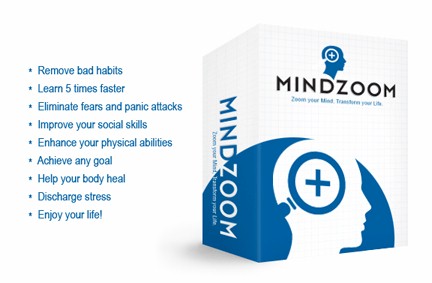Is it accurate to say that your subconscious mind, the part of your mind that runs in the background, is the boss of your life?
This article investigates the hypotheses put forward for both the conscious and subconscious mind.
If you are forever torn in two, undecided, anxious, and worried, aligning these parts of the mind may be all that you need to experience peace, quiet, focus, and achievement.
What Is the Conscious Mind?
In his psychoanalytic hypothesis of personhood, Sigmund Freud talks of consciousness as the ‘knowable.’ He describes it as the part of the mind that comprises everything within awareness. He says that the conscious mind is what we can think and talk about rationally.
Many other psychologists subscribe to the belief. It is widely accepted now to define consciousness as the ‘aware’ part of the mind that encompasses all we know. When you get hungry, you are aware through sensation, and so you look for food.
The conscious mind is an environment powered by sensory sensations, observations, memories, feelings, and dreams. The subconscious, always associated with the conscious, incorporates what we know but is not considered right now. It is all that is in the background.
If you are aware of it, it is the conscious mind.

The Language of the Conscious mind
So, your conscious mind is your immediate companion as you read this. It constitutes what runs in your mind when you read, see, hear, smell, taste, and feel. The journey to the conscious mind starts from these senses. It leads to decisions and actions.
Thoughts – you are more in control
The foundational language of consciousness is unquestionably your immediate thinking.
Whatever you think of, you pull it from the deeper realms of the mind into your present awareness. It becomes part of the processes of your conscious mind.
In other words, through thoughts, you are in charge of your conscious mind.
Just you control your manner of thinking, and in this way, you’ll manage your perspective of everything you know, see, think, feel, smell, or hear.
Rationale—if this, then that
The conscious mind trusts rationale. It relies on cause and effect to plan, react, or strategize. It sets goals and expectations and manages them as life unfolds.
Whatever feelings you have–anger, disappointment, or anxiety–you have the power to stop that by changing your train of thought. You can decide to adjust your line of reasoning. You can activate the aware part of your mind to consider everything and see your worries and fears as unfounded.
If you want to learn more about Subconscious Reprogramming and the Manifestation process. Check out my suggestions on manifestation courses and books. – Opens in new tab
Observation— seeing more than is visible
The actual and philosophical state of consciousness is a mind that is deeply aware, possibly beyond the stimuli in the environment. It is deep visualization directed inwards.
Action – the conscious mind thinks and acts
Deliberation is the outcome of every conscious thought pattern, and then the next follow actions. The underlying driver of all life events is the conscious mind—this the doer, the Mr. Fixit of your life.
Self-perspective- me, myself, I
The conscious mind organizes and structures everything around the ‘I.‘
This is the ‘self,’ a perspective from which everything is interpreted. This self-perspective, in the conscious mind, is the key to meaning and intelligence.
Duties of Conscious Mind

Makes sense of stimuli
To start with, this the part of the mind that distinguishes approaching data. This is data gotten through the senses of sight, sound, smell, taste, contact, or feeling. Your aware mind is consistently watching and making sense of what is happening around you to guide your decisions.
Information access
Before decisions are made in the conscious mind, every new experience is first benchmarked against what you have learned in the past.
The information archived in consciousness is the handiest type that can be accessed when crossing the road so that you remember to look left and right.
In a state of consciousness, one is sharply aware of what they know, and this information can significantly shape and influence inner and outer behavior.
Decision making
Following an in-depth investigation of experiences and benchmarking them against historical data stored in the deep recesses of the mind, the conscious mind settles on decisions and choices.
Social coordination
The conscious mind is the self-aware residence of personality and the mind that is aware of others. The subconscious helps to construct your personality from your social applications and the environment.
Check out our collection of “Free Online Audiobooks” and many free resources in our “Free Library”
What Is the Subconscious Mind?
The subconscious mind is the inner mind. If you have an iceberg partially submerged, the conscious mind is the exposed part, while the subconscious consists of regions below the water and below your awareness.

The subconscious is the dream hub of your mind. You can think of it as the storage facility for all collected memories and impressions imprinted on the mind from life experiences and the behaviors or decisions influenced by such beliefs.
Each experience you’ve ever had, each idea, each impression lives in the subconscious mind and impacts your thoughts and actions. It is relatively easy to retrieve information in the subconscious as it sits slightly below consciousness.
If someone asked you to recollect your saddest memory in life, you would be able to remember it.
Even though it wasn’t what you were focusing on before that question was asked, thinking about it brings it to the conscious, which interprets, plans, and decides courses of action to prevent the recalled ‘bad’ experience from happening again.
Think of your subconscious mind as a limitless storage space. It stores every minute thing that happens in your life. This is the program against which the conscious mind benchmarks daily experiences to act, decide, or behave. So, in a way, your subconscious mind is the CEO of your life—it oversights the conscious.
The primary function of the subconscious mind is to store and recover information. Its responsibility is to guarantee that you act in a consistent manner with what you learned earlier in life. The subconscious mind ensures that all that the conscious mind does is consistent with your concept of self.
The unique idea of self is formed from our young age in self-discovery and identity formation. At this age in life, the subconscious mind is malleable, and your concept of self is mostly influenced and molded by your parents, teachers, and peers.
The Language of the Subconscious Mind
Sometimes psychologists use the term subconscious and unconscious mind interchangeably. Freud, in referring to the definitions and properties of the subconscious, used the term unconscious. He theorized that hidden self-beliefs were making his subjects sick and that these ideas were repressed deep in the unconscious.
But today, ‘unconscious’ means a passed-out state, so subconscious is the globally accepted term for Freud’s ideas of repressed inner thoughts and beliefs.
Related reading: How to Speak to Your Subconscious Mind – Opens in new tab
Images—reality + creative imagination
The subconscious mind is the brain behind your dreams and imaginations. It loves images.
The ideal approach to send pictures from our conscious mind to the subconscious mind is through imagination.
The subconscious is the creative part of the mind. To speak to it, one must break the boundaries of creativity and imagination.
If you were to overcome a negative self-image, say, lack of confidence, the work starts by envisioning a different personal image.
Imagine yourself speaking to a big audience and captivating their attention. Holding this mental image in your mind consistently every day can significantly build your confidence in public speaking.
The idea is to visualize every day, and after some time, these pictures will start to replace any negative programming and belies of self that must have been planted in your mind when you were younger.
Check out these vivid and compelling visualization videos, reinforced with subliminal affirmations for great results! – Opens in new tab
Self-belief—deeply recessed thoughts
This is why positive affirmations play a significant role in psychotherapies against depression and other mental health issues. As a language of the subconscious, self-belief works in the same way as visualization.
Here you focus on your self-image with words and thoughts that get fed directly into your subconscious mind. If we set on a path of re-learning and redefining your thoughts and beliefs about “I am, ‘ after a while, your entire personality changes.
Emotions –gut feelings and instincts
How you feel about yourself defines your personality and, by extension, your interpretation of reality. Individuals with little tolerance for pessimism and negativity unsurprisingly come off as more confident, risk-takers, and leaders.
How you feel about yourself affects how you think about yourself. These two factors are continually shaping and reshaping your life.
Related reading: Learn How to Not Overthink Everything in 5 Easy Steps – Opens in new tab
Functions of the Subconscious Mind
Contrary to past opinions, the subconscious mind actively participates in our daily lives. Everything beheld in the conscious mind is first run through the subconscious. Its roles include:
It’s consistently running in the background and never sleeps
During the day, both the conscious and the subconscious mind are active; however, the subconscious works out of sight. When you are sleeping, your conscious brain is incidentally turned off, and the subconscious mind’s movement reveals as dreams. Simultaneously, your subconscious mind is additionally aware of any external stimuli when you sleep.
It speaks with you through feelings
Feelings are the language of the subconscious. At the point when you are wakeful, you can deliberately see the emotional changes you go through because that is your subconscious telling you “I feel bad” or ‘I feel great” in patterns that are consistent with what it learned in the past.

It controls body functions
Your intrinsic bodily functions like breathing, body temperature regulation, blood circulation, or digestion carry on without your thinking brain. The subconscious drives them. Even when you are asleep, these processes go on autonomously.
It is the comfort zone
Your subconscious mind works hard to keep you comfortable. This is the part of the mind that has memorized how you dislike waking up at 5 am, for instance. If you one day must wake up at 5, it would be a tough battle—between the thinking and the autopilot mind—that renders you exhausted all day long.
This is the part of the brain that holds you back when you should make a move in relationships or business. For those who learned that risks, early mornings, or heartbreaks are “not that bad” from early childhood, things are quite different for them. These are the one-percenters.
It is charged with your survival.
Fight, fright, or flee are all initiated from the subconscious. When you come face to face with an alligator, there is no time to think—the subconscious kicks into play. You may find that a person who never swam before, at that moment, swims very efficiently to save their lives.
The Differences Between Your Conscious and Subconscious Mind
| Conscious | Subconscious |
|---|---|
| The conscious mind is active and data-driven. It is logical and relies on information from the five senses. This is what makes you a thinker and a planner. | The subconscious mind runs in the background. It does not think because it knows. It learned a long time ago. It guides the actions of the conscious mind and frames thought patterns, ideas, and beliefs. |
| For the conscious mind to act, it must interpret information coming in through the senses and pass judgment. It lives in the present moment. | The subconscious mind is driven by instinct, emotions and past experiences. It is the part of the mind charged with your survival and drives you to meet your food, safety, or intimacy needs. |
| The conscious mind falls asleep at night. It switches off when the mind rests and can no longer process thought or react to stimuli. | The subconscious mind remains active when you sleep. It works 24-7-365 controlling your body, your breathing, your organ functions, and everything. It brings you dreams. |
| The conscious mind may realize that you should stop a bad habit or work harder for your financial wellness. But every plan must be signed off from the subconscious. | The subconscious is the driver of will power. If what you think or plan is in line with your idea of self, every plan and goal is attainable without a struggle. |
If you want to learn more about Subconscious Reprogramming and the Manifestation process. Check out my suggestions on manifestation courses and books. – Opens in new tab
The Power of the Subconscious Mind
The primary role of your subconscious mind is to store and recover information. Its purpose is to ensure that you react precisely well on how teachers and parents programmed you.
The subconscious mind makes all that you think, say, or do fit an example consistent with your beliefs about yourself. This is why reciting positive affirmations is powerful — you can reinvent your ideas and change your perspective about life.
Related reading: How to Reach Your Subconscious Mind While Awake – Opens in new tab
Your subconscious mind is instinctual and subjective. It doesn’t bother to think or reason. It merely follows a program of what you believe or were told to believe. It accepts without question, all ideas that are fed into it from the conscious mind. In turn, the subconscious holds those same ideas over the decisions you make in your conscious mind.
All your beliefs, ways of thinking, deduction, and acting are stored away in your subconscious mind. Because these make up the program that runs your life, you’ll have unlimited potential if you care to reach into the subconscious and change those beliefs to align with your current desires and goals.
You can unlock the power of the subconscious by speaking its language. Whatever change you want, visualize it and think of it often, speak of it every time and feel now what it would be like after it happens.
Read also our article: Effective Manifestation Process and Techniques. – Opens in new tab
Stay in Touch
 Join our newsletter by using the forms on this website or click here!
Join our newsletter by using the forms on this website or click here! Follow us on Google News
Follow us on Google News Follow us on Facebook
Follow us on Facebook
Featured Image by Gerd Altmann from Pixabay








